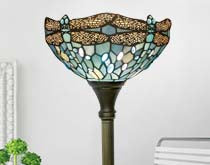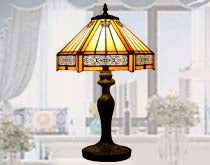What is a Tiffany Lamp? The Art of Stained Glass Lighting Explained
Tiffany lamps are lamps with shades made of colored glass and designed in the Art Nouveau style. These lamps are known for their unique design, colorful glass pieces, and intricate lead glasswork.
In this in-depth guide, we'll look at what defines an authentic Tiffany lamp. You'll gain insights into their fascinating art nouveau history, pioneering stained glass construction methods, and the unmistakable characteristics that make them desirable for elevating home decor with a touch of timeless elegance.
The Iconic Art Nouveau Roots of Tiffany Lamps
Initially designed by Louis Comfort Tiffany in the late 1800s, these decorative leaded glass lamps emerged from the art nouveau movement's emphasis on organic, naturalistic motifs inspired by nature. With intricate patterns of flowing vines, vibrant florals, and iridescent dragonflies, Tiffany's lighting embodied the artistic principles and design revolution of the Art Nouveau era.
Beyond their aesthetics, Tiffany lamps represent the peak of American stained glass artistry and innovation. Each lamp involves meticulously cutting and hand-wrapping hundreds of individual stained glass pieces using a pioneering copper foil technique developed by Louis Comfort Tiffany himself.
Authentic Tiffany Lamp Features and Hallmarks
So, what distinguishes an authentic, original Tiffany lamp from modern reproductions? Look for these iconic characteristics and construction details:
1. Stained Glass Shade and Body
The entire shade and body must be constructed using only individually crafted pieces of stained glass - no plastic or other materials. This allows the lamp's light to beautifully filter through the myriad of colored glass pieces, creating a warm, radiant, and vibrant glow that makes Tiffany lamps so distinct. The varying textures and colors of the genuine leaded glass produce an unmatched visual depth and luminescence.
2. Copper Foil Technique
Instead of lead coming, Tiffany's innovative copper foil technique involved wrapping each piece of stained glass in a malleable copper foil sleeve, then soldering the pieces together into intricate mosaic patterns. This labor-intensive process made the lamps more durable while allowing light to transmit in a warmer, more iridescent manner once illuminated than lamps using lead.
3. Hand-Rolled Copper Trim
The bottom edge of each Tiffany shade features intricate hand-rolled copper trim that adds structural integrity and decorative flair. Meticulously rolled coil by coil, this copper binding complements the lamps' designs while unifying the individual glass pieces into a cohesive whole.
4. Organic, Naturalistic Designs
From lush botanical motifs to realistic dragonflies and nature scenes, Tiffany's designs captured the essence of the natural world through vibrant stained glass artistry. His designers studied plants and creatures in detail, carefully replicating colors and shapes to create glass compositions celebrating nature's beauty.
The Hallmark Anatomy of Tiffany Lamps
While the leaded glass shades are most recognized, authentic Tiffany lamps encompassed entire ornate lighting fixtures crafted with a keen eye for detail:
1. Decorative Bases
Tiffany's lamps featured ornately decorated bases crafted from bronzed spelter or cast brass. These bases were not simply functional but artistry - often including complementary nature motifs like vines or tree bark textures that echoed the organic designs of the shades above.
2. Artistic Shafts
The shaft connecting the shade to the base was more than just structural. Tiffany's lamps incorporated intricate glasswork or decorative geometric patterns along the shaft that complemented and continued the design language of the iconic leaded glass shade overhead.
3. Light-Diffusing Font
At the top of the shaft, a bowl-shaped glass component called the font helped evenly distribute and diffuse the light illuminating from the shade below. This font guaranteed an even glow and prevented heat buildup that could damage the fragile stained glass pieces.
4. The Iconic Lamp Shade
The crowning glory of any Tiffany lamp is its shade - a kaleidoscopic assembled masterpiece containing anywhere from 300 up to an astounding 2,000 individually leaded stained glass pieces in a vivid rainbow of jewel-toned hues. These intricate shades are the lamps' centerpiece.
Popular Tiffany Lamp Styles and Designs
While nature-inspired floral themes like wisteria were a common design theme at Tiffany, his studio created many Tiffany-style lamps over the years:
1. Geometric Patterns
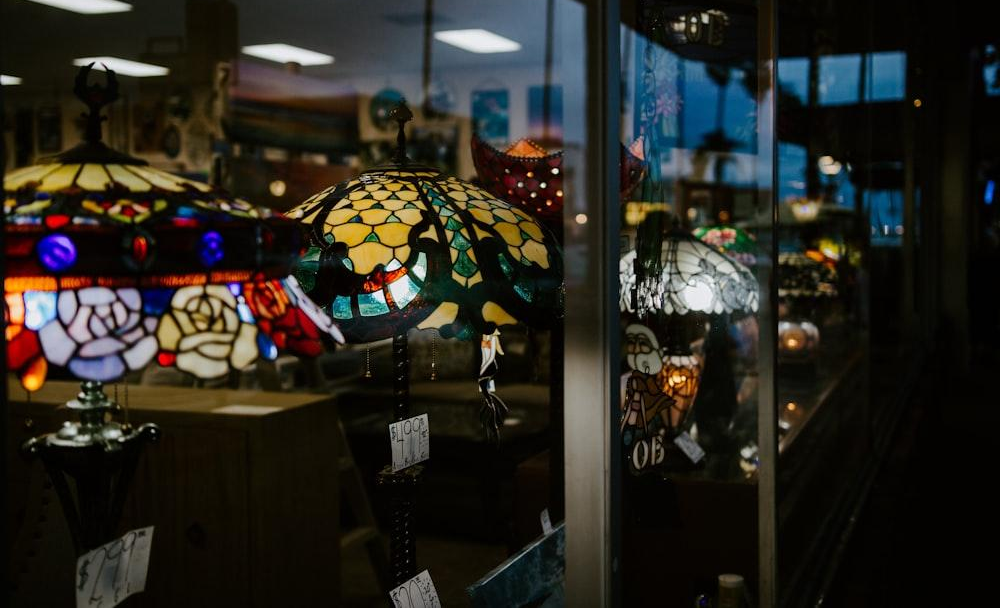
While Tiffany is renowned for his naturalistic floral and organic designs, his studios also produced geometric patterned lamps featuring cleaner lines and angles. These offered a modern counterpoint to the flowing, plantlife motifs and foreshadowed the Art Deco influences that would follow the Art Nouveau era. The geometric lamps showcased Tiffany's versatility in stained glass artistry.
2. Signature Dragonfly Lamps
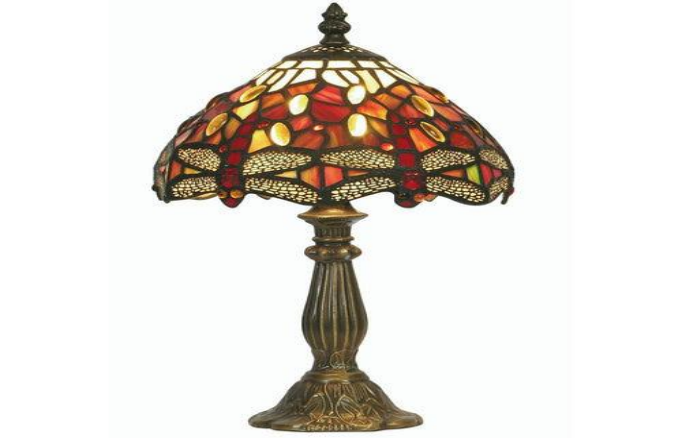
Among Tiffany's most iconic and recognizable designs were his dragonfly lamps and accents. The dragonfly motif appeared across his studios' creations - from the intricate leaded glass shades to the decorative lamp bases and complementary pieces like chandeliers and sconces. The dragonfly became a signature emblem of the Tiffany brand and style.
3. Ornate Hanging Lamps
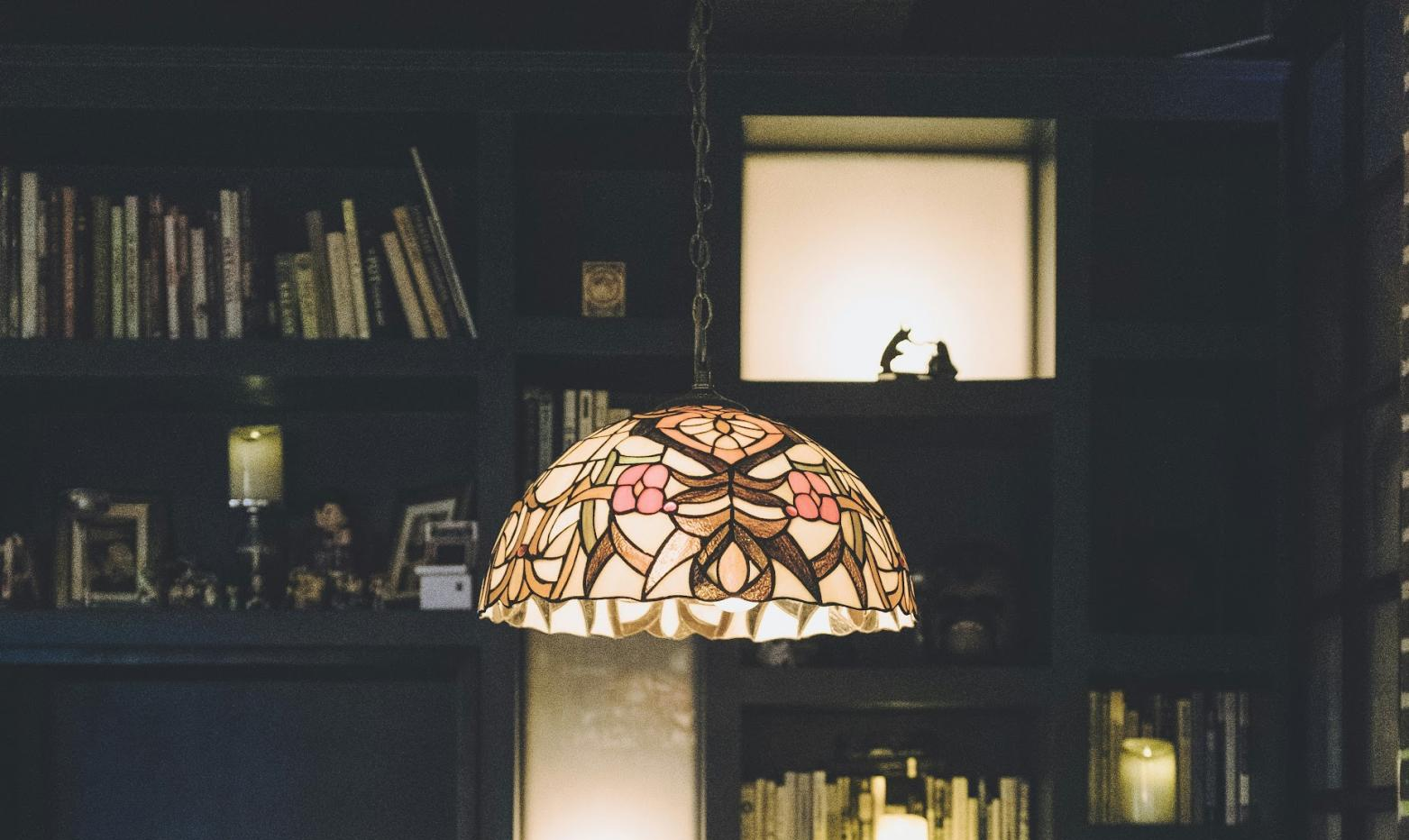
Besides his famous tiffany table lamp and tiffany floor lamps, the Tiffany studios created breathtakingly ornate hanging lamps and chandeliers on a grand scale. These large, suspended pieces incorporated hundreds of leaded glass shades. They were commissioned for luxury hotels, affluent residences, and other lavish spaces desiring Tiffany's ornamental opulence from above.
The Lasting Tiffany Lamp Legacy
Over 100 years after their groundbreaking design, Tiffany's stained glass lighting masterpieces remain hugely influential and highly coveted. While vintage originals from his studios can fetch tens of thousands at auction, their impact is evident in today's vast array of lovingly crafted reproductions.
Whether an antique or modern interpretation, owning a Tiffany lamp allows you to bask in the warm radiance and unmatched artistry that has enchanted generations. With their mastery of leaded glass, few other lighting designs can match the timeless charisma and visual poetry of these legendary art nouveau lamps.
Conclusion
From their artistic art nouveau roots to the innovative glassmaking techniques pioneered by Louis Comfort Tiffany, these lamps represent the pinnacle of decorative lighting and American stained glass craftsmanship. Their intricate details, naturalistic motifs, and vivid colors have cemented them as iconic home decor pieces that elevate any living space.
While owning an authentic Tiffany lamp remains a dream for many collectors, their influence and legacy live on through the stunning array of reproductions and Tiffany-style lighting on the market today. For those seeking to create an inviting ambiance with the warm, glowing elegance that only leaded glass can prove ideally, exploring the world of Tiffany lighting is simply a must.
Related reading: Exploring the diverse types of lampshades












